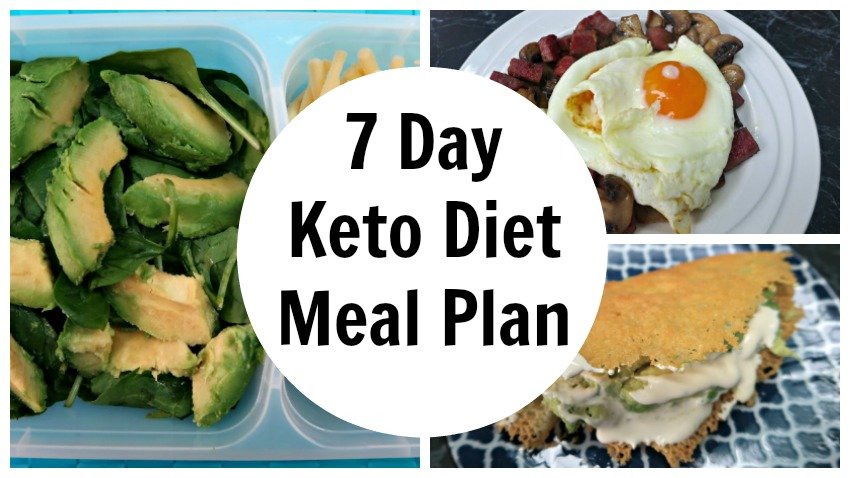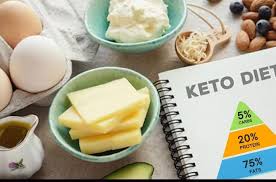KETO DIET PLAN FOR BEGINNERS STEP BY STEP GUIDE –
Mastering the Ketogenic Diet: A Beginner’s Guide and 7-Day Meal Plan
You’ve likely heard about the low-carb, high-fat diet that has become a staple for everyone from top athletes to Hollywood stars. And for good reason: a well-formulated ketogenic diet nourishes your body with whole foods while transforming it into a fat-burning machine. This metabolic shift can make weight loss feel almost effortless. But what exactly does “ketogenic” mean, and how can you get started?
What is Ketosis? Your Body’s Fat-Burning Superpower

The term “ketogenic” comes from “ketosis”—a metabolic state where your body shifts its primary fuel source. Normally, your body runs on glucose from carbohydrates in a process called glycolysis. When you eat carbs, your body burns them for energy first, leaving your stored fat untouched. However, by drastically reducing carbohydrate intake and increasing healthy fats, you trigger ketosis. In this state, your liver breaks down fat into molecules called ketones, which your body and brain then use for energy. Simply put, ketosis primes your body to burn its own fat stores, which is fantastic news for anyone looking to get leaner and healthier.
Key Benefits of a Ketogenic Lifestyle
Beyond weight loss, entering a state of ketosis offers numerous health advantages. Significantly cutting carbs can dramatically reduce insulin resistance, a major precursor to type 2 diabetes. Combined with regular exercise, a low-carb diet can be a powerful tool for managing symptoms and improving overall health for those with type 2 diabetes. Furthermore, ketosis has a natural appetite-suppressing effect. As your body adapts, you’ll find that hunger pangs diminish, making it easier to maintain a healthy caloric deficit and accelerate your fat loss journey.
Getting Started: Your First Two Weeks on Keto
Transitioning into ketosis requires an adaptation period, typically lasting about two weeks. During this time, it’s common to experience some temporary side effects like sluggishness, headaches, and digestive changes, often referred to as the “keto flu.” Don’t be discouraged! These symptoms are usually a sign that your body needs more electrolytes. Focusing on proper salt, potassium, and magnesium intake can correct most of these issues.
During these initial two weeks, your main goal is adaptation, not severe calorie restriction. Forget about a strict “diet” for now and focus on eating keto-friendly foods until you’re satisfied. Your appetite will naturally regulate as your body’s dependence on sugar and processed carbs lessens. One of the most significant benefits of this approach is its muscle-sparing effect. Unlike many calorie-restricted, high-carb diets that can lead to both fat and muscle loss, a ketogenic diet primarily targets fat. This process, known as “body recomposition,” helps you achieve a stronger, more toned physique as you lose weight.

Understanding Initial Weight Loss
It’s common to see a significant drop on the scale during the first few weeks of a ketogenic diet. This is largely due to water loss. Carbohydrates are stored in the body as glycogen, which binds to water in your muscles and liver. As you deplete these glycogen stores, your body flushes out the excess water. While not all of this initial loss is fat, it’s incredibly motivating. You’ll likely feel less bloated and notice your clothes fitting better, providing a great confidence boost to keep you going.
Your Keto Shopping List: Foods to Embrace
- Meat: Beef, goat, lamb, turkey, pork, veal, and chicken.
- Fish: Salmon, trout, catfish, sardines, tuna, haddock, and other fatty fish.
- Fruits: Berries (strawberries, blueberries, raspberries) and avocado.
- Vegetables: Broccoli, asparagus, Brussels sprouts, cucumbers, spinach, and other leafy greens.
- Nuts and Seeds: Almonds, walnuts, sunflower seeds, pumpkin seeds, and sesame seeds.
- Dairy Products: Cheese, Greek yogurt, sour cream, and heavy cream.
- Fats and Oils: Peanut butter, flaxseed oil, butter, sesame oil, olive oil, and almond oil. (If you want to see more ketogenic diet foods, check out comprehensive guides like: The Ultimate List of Foods to Eat on a Ketogenic Diet).
Foods to Avoid on a Ketogenic Diet
- Grains: Wheat, oats, corn, barley, and rye, including all forms of bread and pasta.
- Sugars: Honey, maple syrup, agave, and all forms of table sugar.
- High-Sugar Fruits: Bananas, mangoes, grapes, and pineapple.
- Starchy Vegetables: Potatoes, sweet potatoes, and corn.
- Artificial Sweeteners: Sucralose, Equal, Acesulfame, Splenda, and Saccharin are debated in the keto community; it’s often best to avoid them initially.
- Processed Foods: Many contain hidden sugars, starches, and unhealthy additives like carrageenan.
- “Low-fat” Products: These are typically high in sugar and carbs to compensate for the lack of fat. Avoid diet sodas and other “diet” branded items.
A Simple 7-Day Ketogenic Meal Plan That Gets Results

So, you’ve learned the basics and are ready to start. The key to long-term success on keto is simplicity. This is the exact strategy that led to a 45-pound weight loss in just four months—proof that you don’t need complicated recipes to see incredible results. This meal plan is designed for one week and focuses on consistency and easy preparation.
When you’re overwhelmed with information, keeping things simple is the best path forward. This plan is built around base meals, allowing you to add variety later once you’re comfortable. For now, the focus is on results. After losing 45 pounds in 4 months, I can tell you this method works. If it isn’t broken, don’t fix it.
Your 7-Day Keto Grocery List
This list covers base meals of bacon and eggs, chicken with vegetables, and beef with vegetables.
- A dozen eggs
- One package of bacon
- Real butter
- One package of boneless, SKIN-ON chicken thighs (about 12)
- One onion
- One bell pepper (your choice of color)
- Two bulbs of garlic (optional, but highly recommended)
- A large bag of mixed frozen vegetables (at least 12 cups) or frozen broccoli
- A bag of almonds and a jar of almond butter
- One package of ground beef or steak (enough for 6 portions of about 3-4 ounces each)
Meal Prep for the Week Ahead
A little prep work makes sticking to your plan effortless.
- Preheat your oven. Place the 12 chicken thighs and all the unpeeled cloves from one bulb of garlic on a baking sheet. The oven’s heat will roast the garlic perfectly, making it easy to peel later.
- While the chicken cooks, hard-boil a dozen eggs and set them aside to cool.
- In a large skillet, melt some butter and fry the bacon until crisp. Set the bacon aside.
- Dice half the onion (save the other half for next week) and slice the bell pepper.
- Once the chicken is cooked through, remove it from the oven and let it cool.
- Using the same skillet with the bacon grease, sauté the pepper, onion, and cloves from the second bulb of garlic until tender.
- Add the beef to the skillet and brown it.
Assembling Your Grab-and-Go Meals
- Prepare 12 meal prep containers.
- In 6 containers, place 2 chicken thighs each. Drizzle any pan juices over the top and divide the roasted garlic cloves among them.
- In the other 6 containers, evenly distribute the beef, pepper, and onion mixture.
- Top the meat in all 12 containers with an equal portion of the mixed vegetables.
- Store the containers in the fridge. For longer storage, place some in the freezer and move them to the fridge as needed.
- For your breakfasts, place 2 hard-boiled eggs and your portion of bacon into 6 separate bags. Now you have perfectly portioned breakfasts and lunches/dinners ready for 6 days! For day 7, you can make an extra portion or use it as a day to try a new keto recipe.

Hitting Your Macronutrient Targets
This meal plan is based on a common beginner’s macro profile. For example, let’s aim for:
- Total Calories: ~1570
- Net Carbs: 20g per day
- Protein: 80g per day
- Fat: 130g per day
Divided by three meals, that’s roughly:
- ≈7g net carbs per meal
- ≈26g protein per meal
- ≈44g fat per meal
To align with these targets, you may need to adjust the portion of meat in each container (around 3-4 oz is a good start) and add a healthy fat source. This is crucial for staying in ketosis and feeling full.

Easy Ways to Boost Your Fat Intake
If you find you’re hungry or your energy is low, you likely need more fat. Here are some simple strategies:
- Make Bulletproof Coffee: Blend 1 cup of coffee with 1 tbsp of coconut oil, 1 tsp of butter, and 1 tbsp of full-fat canned coconut milk. This adds about 25g of high-quality fat to start your day.
- Add a tablespoon of mayonnaise or olive oil to your chicken or beef meals.
- Top your vegetables with cheddar or mozzarella cheese before reheating.
- Snack on almonds, macadamia nuts, or a spoonful of almond butter.
The Importance of Salt and Electrolytes on Keto
It’s critical not to neglect your electrolytes on a ketogenic diet: Sodium (Na+), Chloride (Cl-), Potassium (K+), and Magnesium (Mg++). A lack of electrolytes, especially sodium (salt), is the primary cause of keto flu symptoms like brain fog, fatigue, and headaches. As you cut carbs, your body flushes water and electrolytes along with it.
Aim for at least 8 cups of water a day and be generous with salting your food. Many people on keto find they need to supplement with a good electrolyte powder or add broth to their daily routine to feel their best. A multivitamin can also be beneficial to cover any potential gaps in micronutrients like Vitamins B1, D, E, and K.
How Do I Keep Track of All This?
The easiest way to track your food intake and ensure you’re hitting your macro targets is with an app. A great free option is MyFitnessPal. You can use it on the web or download the mobile app.
Tracking what you eat makes all the difference and is a cornerstone of success on the keto diet. Once your account is set up, you simply enter the foods you eat, and the app calculates your total daily carbs, protein, fat, and calories. The built-in barcode scanner is a game-changer—just scan the packaging of your food, and it’s instantly logged. It’s brilliant!
Summary
The ketogenic diet is a powerful tool for weight loss and improved health, and this personal journey is proof that it works. While it might seem confusing at first, focusing on a simple, repeatable meal plan can eliminate the stress and help you build a strong foundation for achieving your goals.

